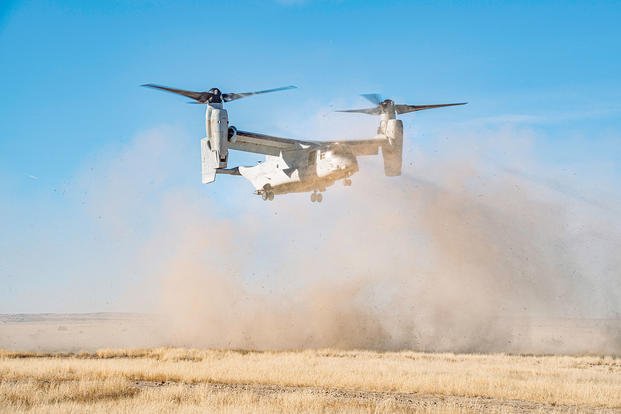Pentagon leadership will imminently lift the ban on flying the V-22 Osprey after a three-month grounding, the chairman of the House Oversight Committee said.
In a statement Wednesday evening, Chairman James Comer, R-Ky., railed against the decision to allow the aircraft to fly again, a move that he said will be public Thursday.
"DoD is lifting the Osprey grounding order despite not providing the Oversight Committee and the American people answers," Comer said. "Serious concerns remain such as accountability measures put in place to prevent crashes, a general lack of transparency, how maintenance and operational upkeep is prioritized, and how DoD assesses risks."
Read Next: They Stood Sentry over America's Nuclear Missile Arsenal. Many Worry It Gave Them Cancer.
A decision on the future of the Osprey has been expected since Defense Secretary Lloyd Austin was briefed on a plan to allow the aircraft to return to flight, but officials have been tight-lipped about exactly when or how the grounding will end.
After Comer's statement, a spokesperson for Naval Air Systems Command, the authority for lifting the grounding, told reporters in an email that "there has been no change in the status of the V-22."
The Osprey was grounded in early December after a crash off the coast of Japan in late November that killed eight special operations airmen. The crash was the Air Force's deadliest Osprey incident to date, but it was the latest in a string of deadly accidents involving the aircraft.
The Osprey is a tiltrotor aircraft with technology that allows it to take off and land like a helicopter but fly at higher speeds like an airplane. While the Air Force has determined a parts failure happened in the November crash, it has not publicly identified a root cause.
One known ongoing mechanical issue involves the clutch system. A so-called hard clutch engagement happens when the aircraft's clutches jam and shred internal components connected to the rotors; the underlying cause for the issue remains unknown.
Shortly after the grounding, Comer launched an investigation into the Osprey's safety and performance. He sent a letter to Austin in December requesting a slew of documents, including safety records, maintenance logs, accident investigations, performance evaluations and more.
In his Wednesday statement, Comer said the Pentagon's response to his request has so far been unsatisfactory.
"The House Oversight Committee has yet to receive adequate information requested from DoD as part of our ongoing investigation launched months ago into the safety and performance of the Osprey aircraft," he said. "We will continue to rigorously investigate the DoD's Osprey program to attain answers to our questions on behalf of American taxpayers and protect U.S. service members defending our nation."
Related: When Will Ospreys Fly Again? That's Still a Question Mark After Defense Secretary Briefing.












